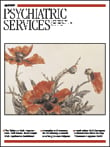For those of us looking for a clear, concise primer on anxiety disorders, Clinical Manual of Anxiety Disorders, edited by Dan J. Stein, director of the MRC research unit on anxiety and stress disorders at the University of Stellenbosch in Cape Town, South Africa, is a well-organized place to start. It refers often to the two most comprehensive sources of psychiatric epidemiologic information: the Epidemiologic Catchment Area study and the National Comorbidity Survey. Given their importance in the evolution of the concept of anxiety and anxiety disorders, this introductory explanation is a welcome review. Readers will likely find it a useful companion as they begin to digest information from the current National Comorbidity Survey-Replication (NCS-R).
Disorder-based chapters follow the overview chapter, with most contributors seeking to further the explanation of the epidemiology of each major disorder, with some variable results. In fact, if there is a flaw in the manual, it is in the variability in the content and presentation among the various chapters. That being said, each chapter is consistently laid out around DSM-IV-TR criteria.
Panic disorder and agoraphobia have concise epidemiologic and treatment sections and a slightly overinclusive section on neuroanatomy; this section would have been more helpful if subsequent chapters had followed a similar format for comparison. The various pharmacologic and psychotherapeutic treatment options are well referenced, a consistent feature throughout the manual. The chapter on specific phobia is thorough, although less so in the treatment review. Social phobia is given a more extensive review of ratings instruments and a broader review of treatment options than disorders in the preceding chapters.
Ratings scales are surprisingly much less thorough in the section on obsessive-compulsive disorder, although there is an excellent narrative review of the various psychotherapies applicable for this disorder (the algorithm pales next to it) followed by a concise table of available pharmacotherapies. Posttraumatic stress disorder (PTSD) receives a useful discussion of nomenclature, a subject often fraught with semantic confusion in this disorder.
Perhaps the most useful concept is the allowance for major depression following trauma, taking the burden off PTSD as the sole clinical category of response to trauma. Again, various available psychotherapies are excellently explained. The strength of the chapter on generalized anxiety disorder lies in its real-life examples of the most common differential diagnoses.
Practicing clinicians are most likely to benefit from this manual, because its depth exceeds that of a general overview and can be further supplemented by its extensive references. It is a timely addition to clinical manuals, because the NCS-R highlights the high prevalence of anxiety disorders in society.

